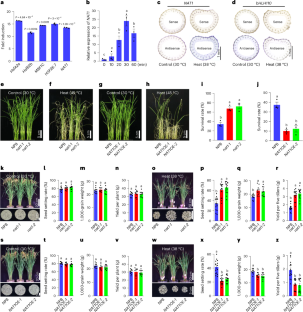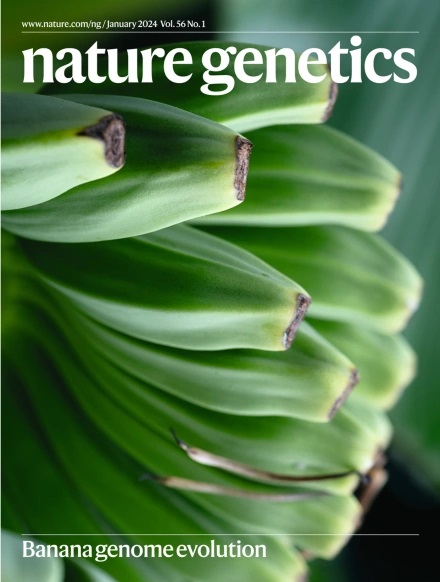NAT1-bHLH110-CER1 /CER1L模块调控水稻耐热性
IF 31.7
1区 生物学
Q1 GENETICS & HEREDITY
引用次数: 0
摘要
水稻生产正面临着与极端温度相关的全球变暖的重大威胁。本文报道了对热胁迫诱导的负调节因子——耐热性负调节因子NAT1 (negative regulator of thermotolerance 1, NAT1)进行修饰,可以增加水稻的蜡沉积,增强其耐热性。我们证明了C2H2家族转录因子NAT1直接抑制bHLH110的表达,bHLH110在热应激条件下直接促进蜡质生物合成基因CER1/CER1L的表达。原位杂交结果显示,NAT1和bHLH110主要表达于表皮层。通过基因编辑技术,我们成功突变了NAT1,消除了其对蜡生物合成的抑制作用,提高了常温条件下的耐热性,且产量不受影响。田间试验进一步证实了nat1编辑水稻在提高结实率和籽粒产量方面的潜力。因此,我们的研究结果揭示了水稻在热胁迫条件下蜡质生物合成的调控机制,并提供了通过修饰NAT1来增强耐热性的策略。本文章由计算机程序翻译,如有差异,请以英文原文为准。


The NAT1–bHLH110–CER1/CER1L module regulates heat stress tolerance in rice
Rice production is facing substantial threats from global warming associated with extreme temperatures. Here we report that modifying a heat stress-induced negative regulator, a negative regulator of thermotolerance 1 (NAT1), increases wax deposition and enhances thermotolerance in rice. We demonstrated that the C2H2 family transcription factor NAT1 directly inhibits bHLH110 expression, and bHLH110 directly promotes the expression of wax biosynthetic genes CER1/CER1L under heat stress conditions. In situ hybridization revealed that both NAT1 and bHLH110 are predominantly expressed in epidermal layers. By using gene-editing technology, we successfully mutated NAT1 to eliminate its inhibitory effects on wax biosynthesis and improved thermotolerance without yield penalty under normal temperature conditions. Field trials further confirmed the potential of NAT1-edited rice to increase seed-setting rate and grain yield. Therefore, our findings shed light on the regulatory mechanisms governing wax biosynthesis under heat stress conditions in rice and provide a strategy to enhance heat resilience through the modification of NAT1. Negative regulator of thermotolerance 1 (NAT1) is identified as a negative regulator of thermotolerance in rice through the NAT1–bHLH110–CER1/CER1L module. Modifying NAT1 by targeted gene editing increases wax deposition and enhances thermotolerance in rice.
求助全文
通过发布文献求助,成功后即可免费获取论文全文。
去求助
来源期刊

Nature genetics
生物-遗传学
CiteScore
43.00
自引率
2.60%
发文量
241
审稿时长
3 months
期刊介绍:
Nature Genetics publishes the very highest quality research in genetics. It encompasses genetic and functional genomic studies on human and plant traits and on other model organisms. Current emphasis is on the genetic basis for common and complex diseases and on the functional mechanism, architecture and evolution of gene networks, studied by experimental perturbation.
Integrative genetic topics comprise, but are not limited to:
-Genes in the pathology of human disease
-Molecular analysis of simple and complex genetic traits
-Cancer genetics
-Agricultural genomics
-Developmental genetics
-Regulatory variation in gene expression
-Strategies and technologies for extracting function from genomic data
-Pharmacological genomics
-Genome evolution
 求助内容:
求助内容: 应助结果提醒方式:
应助结果提醒方式:


